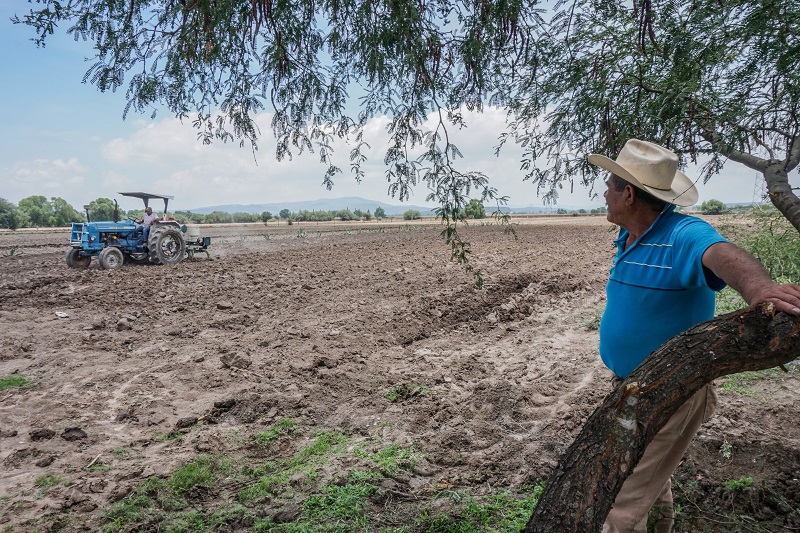By Romeo Robles
What is the Problem?
The cause of this crisis is unsustainable over-extraction of our groundwater resources, mainly for large-scale agriculture production, forcing wells ever deeper into mineral-rich “fossil water,” which is often contaminated with naturally-occurring arsenic and fluoride.
Roughly 85 percent of water pumped from the aquifer goes to agriculture. Water-intensive crops like broccoli, alfalfa, and lettuce are almost exclusively bound for foreign markets in the US, Canada, and elsewhere. We are literally exporting our finite water supply.
Land and Water Policy in Mexico
In Mexico, land and underground resources, including water, have been property of the nation since the Constitution of 1917 at the end of the Mexican Revolution. The Constitution promoted the redistribution of land, formerly concentrated in the hands of a few hacendados or landowning elites. The mechanism is still known today as the ejidos, a type of collectively-owned land.
By 2012, Mexico recognized the human right to water by signing a constitutional amendment guaranteeing everyone in the country access to water for personal consumption in a manner that is “sufficient, safe, acceptable, and affordable.” Despite these safeguards, Mexico has a long way to go. The inequitable distribution of water resources and the irresponsible exploitation by a few powerful actors continues to leave many people behind.
The “Ostrich Politics of Groundwater:” Water Management in Guanajuato
By 1948 there were already signs of severe overexploitation leading to the establishment of the first veda, or “prohibited area.” By 1983 the entire state of Guanajuato was placed under veda. It was already clear then, nearly four decades ago, that we were over-extracting the aquifers and this finite water resource was dwindling.
The vedas were largely ignored or easily circumvented and, despite these prohibitions, according to Dr. Jaime Hoogesteger (a long-term advisor to Caminos) the number of drilled wells in the state rose from 100 in the 1940s to 2,000 in 1960. By 1982 more than 10,000 wells were drilled, and today there are estimated to be more than 20,000 wells in the State of Guanajuato. We are extracting at least 25 percent more groundwater from the aquifers every year than gets refilled naturally by rainfall.
This rampant disregard to sustainably manage and preserve our most important resource is what Hoogesteger calls the ostrich politics of groundwater: “Politicians, bureaucrats, private companies and powerful users all act alike–just like ostriches, they tend to bury their heads in the sand and ignore the obvious signs and consequences of sustained intensive groundwater use on the environment, the rural poor and future generations.”
Pulling our Heads Out of the Sand
Monitoring the problem and creating the solutions, educational programming, and community-implementation models that we do at Caminos de Agua are incredibly important factors to help solve the underlying issues for so many.
However, the root causes of this region’s incredibly complex water crisis require true systemic change–far more than we alone can offer as a small NGO. Political will and multi-institutional collaboration are greatly needed to create programs and coherent water policies to both heal and then safeguard our finite water resources for the future.
An extract of “La Gota,” the monthly bulletin from Caminos de Agua: https://caminosdeagua.org/es/la-gota-cda

